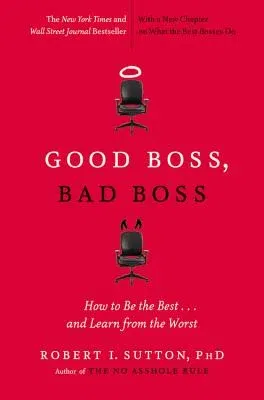Now with a new chapter that focuses on what great bosses really do. Dr.
Sutton reveals new insights that he's learned since the writing of Good
Boss, Bad Boss. Sutton adds revelatory thoughts about such legendary
bosses as Ed Catmull, Steve Jobs, A.G. Lafley, and many more, and how
you can implement their techniques.
If you are a boss who wants to do great work, what can you do about it?
Good Boss, Bad Boss is devoted to answering that question. Stanford
Professor Robert Sutton weaves together the best psychological and
management research with compelling stories and cases to reveal the
mindset and moves of the best (and worst) bosses. This book was inspired
by the deluge of emails, research, phone calls, and conversations that
Dr. Sutton experienced after publishing his blockbuster bestseller The
No Asshole Rule. He realized that most of these stories and studies
swirled around a central figure in every workplace: THE BOSS. These
heart-breaking, inspiring, and sometimes funny stories taught Sutton
that most bosses - and their followers - wanted a lot more than just a
jerk-free workplace. They aspired to become (or work for) an all-around
great boss, somebody with the skill and grit to inspire superior work,
commitment, and dignity among their charges.
As Dr. Sutton digs into the nitty-gritty of what the best (and worst)
bosses do, a theme runs throughout Good Boss, Bad Boss - which brings
together the diverse lessons and is a hallmark of great bosses: They
work doggedly to "stay in tune" with how their followers (and superiors,
peers, and customers too) react to what they say and do.
The best bosses are acutely aware that their success depends on having
the self-awareness to control their moods and moves, to accurately
interpret their impact on others, and to make adjustments on the fly
that continuously spark effort, dignity, and pride among their people.

